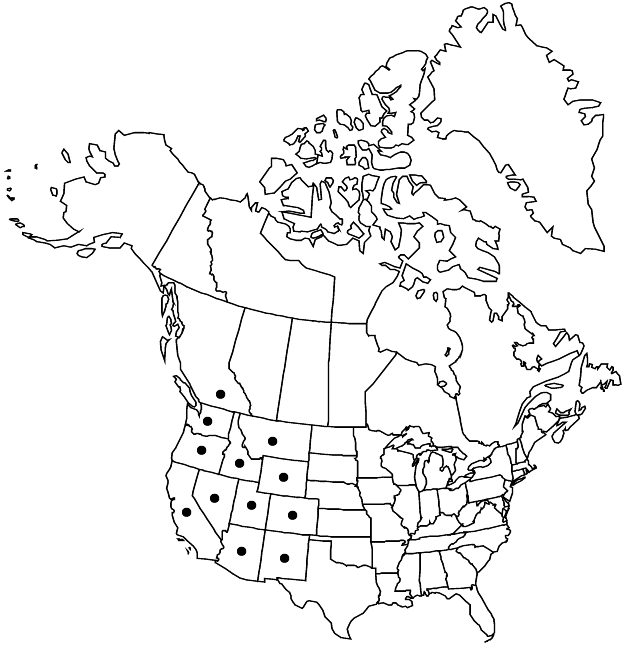familyPolygonaceae
subfamilyPolygonaceae subfam. Polygonoideae
genusPolygonum
sectionPolygonum sect. Duravia
speciesPolygonum polygaloides
subspeciesPolygonum polygaloides subsp. kelloggii
Polygonum polygaloides subsp. kelloggii
Madroño 31: 251. 1984.
Common names: Kellogg’s knotweed
Endemic
Basionym: Polygonum kelloggii Greene Fl. Francisc., 134. 1891
Synonyms: Polygonum minutissimum L. O. Williams Polygonum unifolium Small ex Rydberg
Revision as of 23:08, 5 November 2020 by imported>Volume Importer
Stems 2–15 cm. Inflorescences mostly terminal, prolonged almost to base of stems, ovoid, 3–15 × 5–15 mm, or ± continuous; bracts ± patent, linear to linear-lanceolate, 7–25 mm, soft, margins flat or revolute, green, not scarious; lateral and midveins inconspicuous. Flowers: perianth 1.5–2.3 mm; tube 19–34% of perianth length; tepals pink or white; perianth tube and base of tepals smooth; stamens 3. Achenes light yellow to greenish brown, ovate, 1.3–1.7 mm, smooth to obscurely longitudinally reticulate, shiny.
Phenology: Flowering Jun–Sep.
Habitat: Mountain meadows, seeps, vernal pools, dry subalpine slopes
Elevation: 1300-3300 m
Distribution

B.C., Ariz., Calif., Colo., Idaho, Mont., Nev., N.Mex., Oreg., Utah, Wash., Wyo.
Discussion
Selected References
None.
Lower Taxa
None.